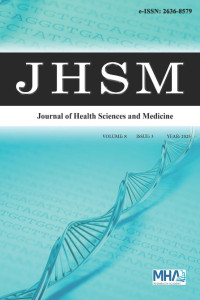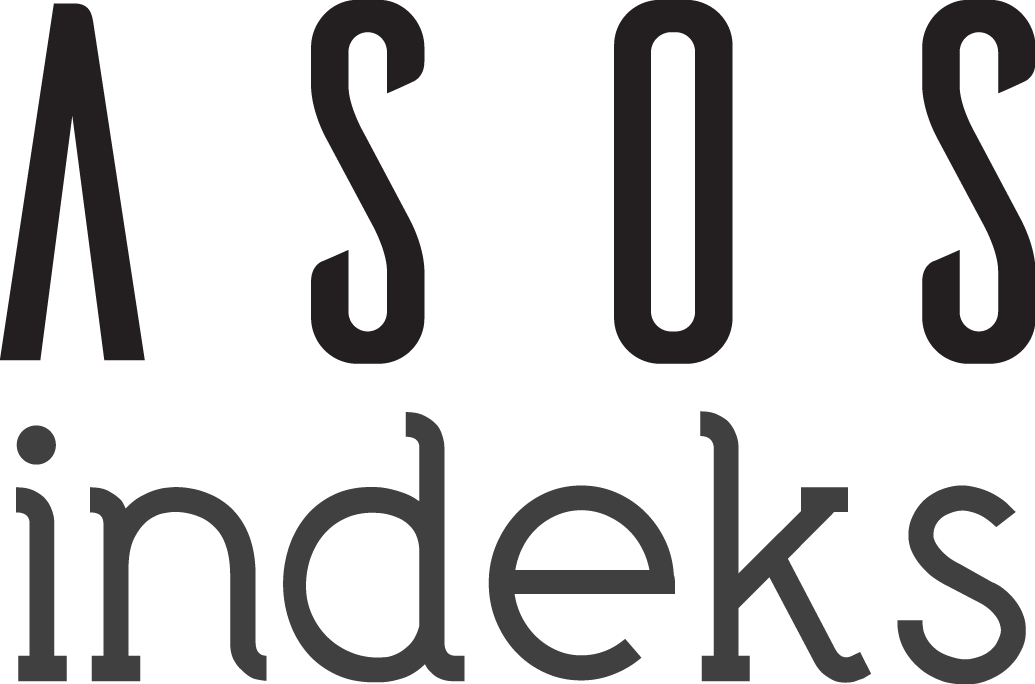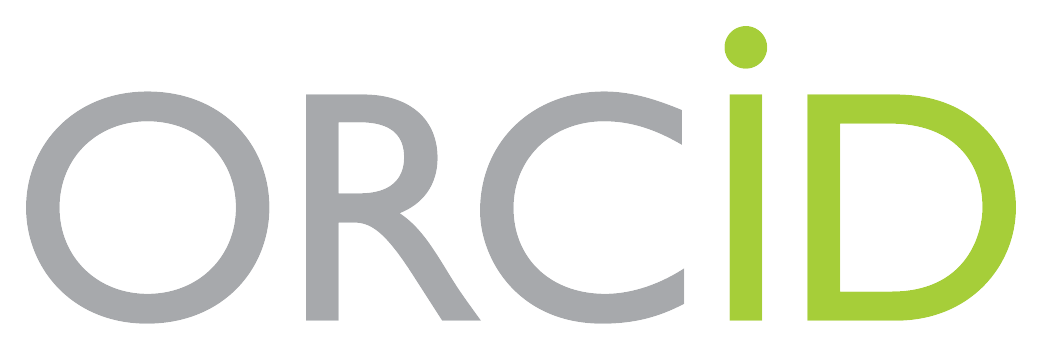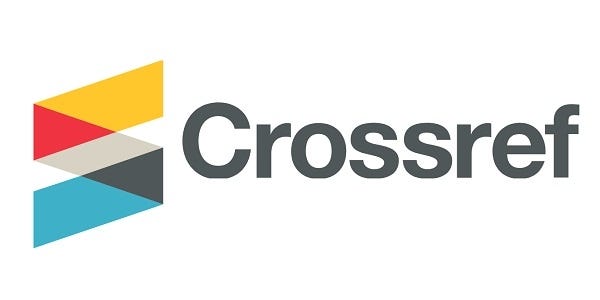Abstract
Amaç: Bu çalışmanın amacı, yoğun bakım ünitesine (YBÜ) kabul edilen geriatrik hastalarda Prognostik Beslenme İndeksi’nin (PNI) hastane içi mortaliteyi öngörmedeki prognostik değerini değerlendirmektir.
Yöntem: Bu tek merkezli, retrospektif kohort çalışmaya, Haziran–Aralık 2024 tarihleri arasında YBÜ’ye kabul edilen ve yaşı ≥65 olan 337 hasta dahil edilmiştir. Hastalar, klinik sonuçlarına göre sağ kalanlar ve eksitus olanlar olmak üzere iki gruba ayrılmıştır. Demografik veriler, eşlik eden hastalıklar, klinik sonuçlar ve serum albümin ile lenfosit sayısı dahil olmak üzere laboratuvar parametreleri analiz edilmiştir. PNI şu formüle göre hesaplanmıştır:
PNI = (10 × serum albümin [g/dL]) + (0.005 × toplam lenfosit sayısı [/mm³])
İstatistiksel analizler arasında tek değişkenli ve çok değişkenli lojistik regresyon ile ROC eğrisi analizi yer almıştır.
Bulgular: 337 hastanın 195’i (%57,9) YBÜ’deki izlem sürecinde hayatını kaybetmiştir. Eksitus grubunda PNI skorları anlamlı şekilde daha düşüktü (p = 0.001). PNI için optimal kesim değeri ≤29.8 olarak belirlenmiştir (duyarlılık: %43,1, özgüllük: %90,1). ROC eğrisi altında kalan alan (AUC) 0.661 olarak bulunmuş olup bu değer, sınırlı ayırt edici gücü göstermektedir. Çok değişkenli analizde, uzamış YBÜ yatışı (OR = 1.052), yüksek lökosit (OR = 1.044), hipoalbüminemi (OR = 2.283), artmış üre (OR = 1.006), laktat (OR = 1.144), sepsis (OR = 2.362) ve inme (OR = 2.746) mortalitenin bağımsız belirleyicileri olarak saptanmıştır (p < 0.05).
Sonuç: Düşük PNI skorları, geriatrik YBÜ hastalarında hastane içi mortalite ile ilişkilidir. Ancak, düşük duyarlılığı ve orta düzeyde AUC değeri göz önüne alındığında, PNI tek başına bir öngörü aracı olarak kullanılmamalıdır. Bununla birlikte, basit ve düşük maliyetli bir biyobelirteç olarak PNI, geriatrik yoğun bakım hastalarında erken risk sınıflandırması ve klinik karar verme süreçlerinde diğer klinik parametrelerle birlikte destekleyici bir araç olarak kullanılabilir.
Keywords
Prognostik Beslenme İndeksi malnütrisyon geriatrik hasta yoğun bakım ünitesi mortalite albümin lenfosit sayısı
References
- Bouillanne O, Morineau G, Dupont C, et al. Geriatric Nutritional Risk Index: a new index for evaluating at-risk elderly medical patients. Am J Clin Nutr. 2005;82(4):777-783. doi:10.1093/ajcn/82.4.777
- Dudrick SJ. Nutrition management of geriatric surgical patients. Surg Clin North Am. 2011;91(4):877-ix. doi:10.1016/j.suc.2011.05.003
- Lew CCH, Yandell R, Fraser RJL, Chua AP, Chong MFF, Miller M. Association between malnutrition and clinical outcomes in the intensive care unit: a systematic review. JPEN J Parenter Enteral Nutr. 2017;41(5): 744-758. doi:10.1177/0148607115625638
- Nishioka S, Wakabayashi H, Nishioka E, Yoshida T, Mori N, Watanabe R. Nutritional improvement correlates with recovery of activities of daily living among malnourished elderly stroke patients in the convalescent stage: a cross-sectional study. J Acad Nutr Diet. 2016;116(5):837-843. doi: 10.1016/j.jand.2015.09.014
- Sun K, Chen S, Xu J, Li G, He Y. The prognostic significance of the Prognostic Nutritional Index in cancer: a systematic review and meta-analysis. J Cancer Res Clin Oncol. 2014;140(9):1537-1549. doi:10.1007/s00432-014-1714-3
- Li S, Zhang J, Zheng H, Wang X, Liu Z, Sun T. Prognostic role of serum albumin, total lymphocyte count, and mini nutritional assessment on outcomes after geriatric hip fracture surgery: a meta-analysis and systematic review. J Arthroplasty. 2019;34(6):1287-1296. doi:10.1016/j.arth.2019.02.003
- Yap FH, Joynt GM, Buckley TA, Wong EL. Association of serum albumin concentration and mortality risk in critically ill patients. Anaesth Intensive Care. 2002;30(2):202-207. doi:10.1177/0310057X0203000213
- Vincent JL, Russell JA, Jacob M, et al. Albumin administration in the acutely ill: what is new and where next? Crit Care. 2014;18(4):231. doi:10. 1186/cc13991
- Wang D, Hu X, Xiao L, et al. Prognostic Nutritional Index and Systemic Immune-Inflammation Index predict the prognosis of patients with HCC. J Gastrointest Surg. 2021;25(2):421-427. doi:10.1007/s11605-019-04492-7
- Yıldırım A, Kucukosmanoglu M, Koyunsever NY, Cekici Y, Belibagli MC, Kılıc S. Combined effects of nutritional status on long-term mortality in patients with non-ST segment elevation myocardial infarction undergoing percutaneous coronary intervention. Rev Assoc Med Bras (1992). 2021;67(2):235-242. doi:10.1590/1806-9282.67.02.20200610
- Hanada M, Yamauchi K, Miyazaki S, et al. Geriatric Nutritional Risk Index, a predictive assessment tool, for postoperative complications after abdominal surgery: a prospective multicenter cohort study. Geriatr Gerontol Int. 2019;19(9):924-929. doi:10.1111/ggi.13750
- Akgün A, Karaçağlar E, Akpulat S, Müderrisoğlu H. Relationship between different nutritional scores in elderly patients with acute decompensated heart failure in the coronary intensive care unit. Turk J Geriatr. 2023;26(2):176-183.
- Küçük O, Seğmen F, Aydemir S. Prediction of mortality in patients admitted to the intensive care unit due to respiratory failure; use of nutritional screening tools mNUTRIC and NRS-2002. Arch Clin Med. 2025;7(2):111-119. doi:10.38053/acmj.1608252
- de Grooth HJ, Geenen IL, Girbes AR, Vincent JL, Parienti JJ, Oudemans-van Straaten HM. SOFA and mortality endpoints in randomized controlled trials: a systematic review and meta-regression analysis. Crit Care. 2017;21(1):38. doi:10.1186/s13054-017-1609-1
- Fuchs PA, Czech IJ, Krzych ŁJ. Mortality prediction using SOFA score in critically ill surgical and non-surgical patients: which parameter is the most valuable? Medicina (Kaunas). 2020;56(6):273. doi:10.3390/medicina56060273
- Buzby GP, Mullen JL, Matthews DC, et al. Prognostic Nutritional Index in gastrointestinal surgery. Am J Surg. 1980;139(1):160-167. doi:10.1016/ 0002-9610(80)90246-9
- Hayashi J, Uchida T, Ri S, et al. Clinical significance of the Prognostic Nutritional Index in patients undergoing cardiovascular surgery. Gen Thorac Cardiovasc Surg. 2020;68(8):774-779. doi:10.1007/s11748-020-01300-x
- Keskin M, İpek G, Aldağ M, et al. Effect of nutritional status on mortality in patients undergoing coronary artery bypass grafting. Nutrition. 2018; 48:82-86. doi:10.1016/j.nut.2017.10.024
- Ofluoğlu CB, Mülküt F, Aydın İC, et al. Prognostic Nutritional Index as a predictor of surgical morbidity in total neoadjuvant therapy for locally advanced rectal cancer. J Clin Med. 2025;14(6):1937. doi:10.3390/jcm14061937
- Eckart A, Struja T, Kutz A, et al. Relationship of nutritional status, inflammation, and serum albumin levels during acute illness: a prospective study. Am J Med. 2020;133(6):713-722.e7. doi:10.1016/j.amjmed.2019.10.031
- Sheinenzon A, Shehadeh M, Michelis R, et al. Serum albumin levels and inflammation. Int J Biol Macromol. 2021;184:857-862. doi:10.1016/j.ijbiomac.2021.06.140
- Huang Z, Fu Z, Huang W, Huang K. Prognostic value of neutrophil-to-lymphocyte ratio in sepsis: a meta-analysis. Am J Emerg Med. 2020; 38(3):641-647. doi:10.1016/j.ajem.2019.10.023
- Taşkın Ö, Demir U, Yılmaz A, et al. Investigation of the relationship between Prognostic Nutrition Index and mortality in patients with femur fracture. J Contemp Med. 2023;13(1):60-65. doi:10.16899/jcm.1210 766
- Arslan K, Celik S, Arslan HC, et al. Predictive value of Prognostic Nutritional Index on postoperative intensive care requirement and mortality in geriatric hip fracture patients. North Clin Istanb. 2024;11(3): 249-257. doi:10.14744/nci.2024.60430
The Prognostic Nutritional Index as a predictor of in-hospital mortality in geriatric intensive care patients
Abstract
Aims: This study aimed to evaluate the prognostic value of the Prognostic Nutritional Index (PNI) in predicting in-hospital mortality among geriatric patients admitted to the intensive care unit (ICU).
Methods: This single-center, retrospective cohort study included 337 patients aged ≥65 years who were admitted to the ICU between June and December 2024. Patients were divided into two groups based on clinical outcomes: survivors and non-survivors. Demographic data, comorbidities, clinical outcomes, and laboratory values including serum albumin and lymphocyte count were analyzed. PNI was calculated as: PNI=[10×serum albumin (g/dl)]+[0.005×total lymphocyte count (/mm3)]. Statistical analyses included univariate and multivariate logistic regression and receiver operating characteristic (ROC) curve analysis.
Results: Among 337 patients, 195 (57.9%) died during ICU stay. PNI scores were significantly lower in non-survivors (p=0.001), with an optimal cut-off value of ≤29.8 (sensitivity: 43.1%, specificity: 90.1%). The area under the ROC curve for PNI was 0.661, indicating limited discriminatory power. Multivariate analysis identified prolonged ICU stay (OR=1.052), elevated WBC (OR=1.044), hypoalbuminemia (OR=2.283), increased urea (OR=1.006), lactate (OR=1.144), sepsis (OR=2.362), and stroke (OR=2.746) as independent predictors of mortality (p<0.05).
Conclusion: Low PNI scores are associated with in-hospital mortality in geriatric ICU patients. However, given its low sensitivity and moderate AUC, PNI should not be used as a standalone predictor. Instead, as a simple and cost-effective biomarker, it may serve as a supportive tool alongside other clinical parameters for early risk stratification in geriatric intensive care settings.
Keywords
Prognostic Nutritional Index malnutrition geriatric patients intensive care unit mortality albumin lymphocyte count
References
- Bouillanne O, Morineau G, Dupont C, et al. Geriatric Nutritional Risk Index: a new index for evaluating at-risk elderly medical patients. Am J Clin Nutr. 2005;82(4):777-783. doi:10.1093/ajcn/82.4.777
- Dudrick SJ. Nutrition management of geriatric surgical patients. Surg Clin North Am. 2011;91(4):877-ix. doi:10.1016/j.suc.2011.05.003
- Lew CCH, Yandell R, Fraser RJL, Chua AP, Chong MFF, Miller M. Association between malnutrition and clinical outcomes in the intensive care unit: a systematic review. JPEN J Parenter Enteral Nutr. 2017;41(5): 744-758. doi:10.1177/0148607115625638
- Nishioka S, Wakabayashi H, Nishioka E, Yoshida T, Mori N, Watanabe R. Nutritional improvement correlates with recovery of activities of daily living among malnourished elderly stroke patients in the convalescent stage: a cross-sectional study. J Acad Nutr Diet. 2016;116(5):837-843. doi: 10.1016/j.jand.2015.09.014
- Sun K, Chen S, Xu J, Li G, He Y. The prognostic significance of the Prognostic Nutritional Index in cancer: a systematic review and meta-analysis. J Cancer Res Clin Oncol. 2014;140(9):1537-1549. doi:10.1007/s00432-014-1714-3
- Li S, Zhang J, Zheng H, Wang X, Liu Z, Sun T. Prognostic role of serum albumin, total lymphocyte count, and mini nutritional assessment on outcomes after geriatric hip fracture surgery: a meta-analysis and systematic review. J Arthroplasty. 2019;34(6):1287-1296. doi:10.1016/j.arth.2019.02.003
- Yap FH, Joynt GM, Buckley TA, Wong EL. Association of serum albumin concentration and mortality risk in critically ill patients. Anaesth Intensive Care. 2002;30(2):202-207. doi:10.1177/0310057X0203000213
- Vincent JL, Russell JA, Jacob M, et al. Albumin administration in the acutely ill: what is new and where next? Crit Care. 2014;18(4):231. doi:10. 1186/cc13991
- Wang D, Hu X, Xiao L, et al. Prognostic Nutritional Index and Systemic Immune-Inflammation Index predict the prognosis of patients with HCC. J Gastrointest Surg. 2021;25(2):421-427. doi:10.1007/s11605-019-04492-7
- Yıldırım A, Kucukosmanoglu M, Koyunsever NY, Cekici Y, Belibagli MC, Kılıc S. Combined effects of nutritional status on long-term mortality in patients with non-ST segment elevation myocardial infarction undergoing percutaneous coronary intervention. Rev Assoc Med Bras (1992). 2021;67(2):235-242. doi:10.1590/1806-9282.67.02.20200610
- Hanada M, Yamauchi K, Miyazaki S, et al. Geriatric Nutritional Risk Index, a predictive assessment tool, for postoperative complications after abdominal surgery: a prospective multicenter cohort study. Geriatr Gerontol Int. 2019;19(9):924-929. doi:10.1111/ggi.13750
- Akgün A, Karaçağlar E, Akpulat S, Müderrisoğlu H. Relationship between different nutritional scores in elderly patients with acute decompensated heart failure in the coronary intensive care unit. Turk J Geriatr. 2023;26(2):176-183.
- Küçük O, Seğmen F, Aydemir S. Prediction of mortality in patients admitted to the intensive care unit due to respiratory failure; use of nutritional screening tools mNUTRIC and NRS-2002. Arch Clin Med. 2025;7(2):111-119. doi:10.38053/acmj.1608252
- de Grooth HJ, Geenen IL, Girbes AR, Vincent JL, Parienti JJ, Oudemans-van Straaten HM. SOFA and mortality endpoints in randomized controlled trials: a systematic review and meta-regression analysis. Crit Care. 2017;21(1):38. doi:10.1186/s13054-017-1609-1
- Fuchs PA, Czech IJ, Krzych ŁJ. Mortality prediction using SOFA score in critically ill surgical and non-surgical patients: which parameter is the most valuable? Medicina (Kaunas). 2020;56(6):273. doi:10.3390/medicina56060273
- Buzby GP, Mullen JL, Matthews DC, et al. Prognostic Nutritional Index in gastrointestinal surgery. Am J Surg. 1980;139(1):160-167. doi:10.1016/ 0002-9610(80)90246-9
- Hayashi J, Uchida T, Ri S, et al. Clinical significance of the Prognostic Nutritional Index in patients undergoing cardiovascular surgery. Gen Thorac Cardiovasc Surg. 2020;68(8):774-779. doi:10.1007/s11748-020-01300-x
- Keskin M, İpek G, Aldağ M, et al. Effect of nutritional status on mortality in patients undergoing coronary artery bypass grafting. Nutrition. 2018; 48:82-86. doi:10.1016/j.nut.2017.10.024
- Ofluoğlu CB, Mülküt F, Aydın İC, et al. Prognostic Nutritional Index as a predictor of surgical morbidity in total neoadjuvant therapy for locally advanced rectal cancer. J Clin Med. 2025;14(6):1937. doi:10.3390/jcm14061937
- Eckart A, Struja T, Kutz A, et al. Relationship of nutritional status, inflammation, and serum albumin levels during acute illness: a prospective study. Am J Med. 2020;133(6):713-722.e7. doi:10.1016/j.amjmed.2019.10.031
- Sheinenzon A, Shehadeh M, Michelis R, et al. Serum albumin levels and inflammation. Int J Biol Macromol. 2021;184:857-862. doi:10.1016/j.ijbiomac.2021.06.140
- Huang Z, Fu Z, Huang W, Huang K. Prognostic value of neutrophil-to-lymphocyte ratio in sepsis: a meta-analysis. Am J Emerg Med. 2020; 38(3):641-647. doi:10.1016/j.ajem.2019.10.023
- Taşkın Ö, Demir U, Yılmaz A, et al. Investigation of the relationship between Prognostic Nutrition Index and mortality in patients with femur fracture. J Contemp Med. 2023;13(1):60-65. doi:10.16899/jcm.1210 766
- Arslan K, Celik S, Arslan HC, et al. Predictive value of Prognostic Nutritional Index on postoperative intensive care requirement and mortality in geriatric hip fracture patients. North Clin Istanb. 2024;11(3): 249-257. doi:10.14744/nci.2024.60430
Details
| Primary Language | English |
|---|---|
| Subjects | Intensive Care |
| Journal Section | Original Article |
| Authors | |
| Publication Date | May 30, 2025 |
| Submission Date | March 27, 2025 |
| Acceptance Date | May 22, 2025 |
| Published in Issue | Year 2025 Volume: 8 Issue: 3 |
Interuniversity Board (UAK) Equivalency: Article published in Ulakbim TR Index journal [10 POINTS], and Article published in other (excuding 1a, b, c) international indexed journal (1d) [5 POINTS].
The Directories (indexes) and Platforms we are included in are at the bottom of the page.
Note: Our journal is not WOS indexed and therefore is not classified as Q.
You can download Council of Higher Education (CoHG) [Yüksek Öğretim Kurumu (YÖK)] Criteria) decisions about predatory/questionable journals and the author's clarification text and journal charge policy from your browser. https://dergipark.org.tr/tr/journal/2316/file/4905/show
The indexes of the journal are ULAKBİM TR Dizin, Index Copernicus, ICI World of Journals, DOAJ, Directory of Research Journals Indexing (DRJI), General Impact Factor, ASOS Index, WorldCat (OCLC), MIAR, EuroPub, OpenAIRE, Türkiye Citation Index, Türk Medline Index, InfoBase Index, Scilit, etc.
The platforms of the journal are Google Scholar, CrossRef (DOI), ResearchBib, Open Access, COPE, ICMJE, NCBI, ORCID, Creative Commons, etc.
| ||
|
Our Journal using the DergiPark system indexed are;
Ulakbim TR Dizin, Index Copernicus, ICI World of Journals, Directory of Research Journals Indexing (DRJI), General Impact Factor, ASOS Index, OpenAIRE, MIAR, EuroPub, WorldCat (OCLC), DOAJ, Türkiye Citation Index, Türk Medline Index, InfoBase Index
Our Journal using the DergiPark system platforms are;
Journal articles are evaluated as "Double-Blind Peer Review".
Our journal has adopted the Open Access Policy and articles in JHSM are Open Access and fully comply with Open Access instructions. All articles in the system can be accessed and read without a journal user. https//dergipark.org.tr/tr/pub/jhsm/page/9535
Journal charge policy https://dergipark.org.tr/tr/pub/jhsm/page/10912
Our journal has been indexed in DOAJ as of May 18, 2020.
Our journal has been indexed in TR-Dizin as of March 12, 2021.
Articles published in the Journal of Health Sciences and Medicine have open access and are licensed under the Creative Commons CC BY-NC-ND 4.0 International License.















